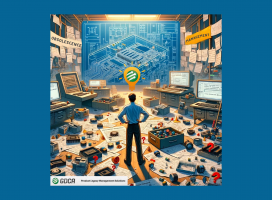The Human Factor: When losing older workers leads to obsolescence
Ask anyone who drives an older car.
As the system ages, it develops its own quirks. You have to jiggle the shifter in park to get the keys out of the ignition. You have to pump the gas twice before it starts up on a cold day. The AC has to be turned off when going up a steep hill on days over 96 degrees. You know that you can get away with just 2/3rds of the thread on the bolts, but only for 6 weeks.
In short, you know that system inside and out: all the bugs, the features, and quirks that impact operation and repair. Unless your mechanic is into vintage cars, though, he’s not going to relish working on an older vehicle. A younger mechanic may tell you the car is “old” and you’re better off just getting a new one, just when the old one was about to become a “classic.”
Not everyone, however, wants to — or can afford to — buy a new car. The same goes for trying to sustain a legacy mission-critical system. At a time when UAVs are a priority, funding is difficult for a replacement board in a Navy submarine from 1973, for example. It’s not uncommon for companies to save on the cost of passing on sustaining support knowledge to new generations of engineers. Instead relying on the ingenuity of a shrinking group of more experienced engineers. RoHs was implemented before some young engineers were even out of high school, and we see nuclear power plants that have been running since 1969 before some were even born.
Traditionally, the dialogue around obsolescence has been focused on keeping access to critical IP, or being able to acquire needed components. However, there is a human element to obsolescence management that should not be overlooked. As the workforce ages, the engineers who know those mission-critical systems inside and out, begin to retire, and will continue to do so. When these vital members of the team retire–and they will one day retire–a lot of important knowledge leaves with them if not passed on.
There are other factors as well. As OEMs merge or acquire other shops, information can easily be lost in the process. This could be due to clashing organizational systems or just plain old human error. Finding a particular board from a particular OEM becomes even more difficult as a result. The recent COVID pandemic is another example of a factor that can lead to the loss of information. The pandemic saw an exodus of older engineers who were unable to go into work and as a result, retired early or simply left, taking their knowledge of old systems with them.
Legacy systems aren’t getting any easier to sustain. The challenge faced by program and engineering managers alike is how to feasibly “institutionalize” this know-how, in a time of rapidly shrinking budgets. Handling this challenge proactively can ensure your perpetual access to necessary IP, and is a wise option to consider.
We’ve seen that being proactive is often the difference between ongoing legacy success, and a legacy system at risk. That’s why we are dedicated to rebuilding old boards and putting plans in place to ensure their availability throughout their life cycle. An OEM can only get you a board for up to 15 years at most–not an ideal situation if you’ll need the system for at least 20 years. And even with all of the documentation, all of the files available, there are some things that newer or younger engineers just won’t know.
That’s where GDCA comes in. It’s important to secure production capability on the board or boards you know you’ll need long-term, including important information from the people who developed it. As often as we can, we talk to these engineers to learn all of their tips and tricks while reengineering your board.
GDCA is the leading industry provider of proactive obsolescence management services. Our goal is to keep you running smoothly. To find a board, you can search our database here.
The GDCA Team
*Originally created on October 10, 2012. Updated April 10, 2023




